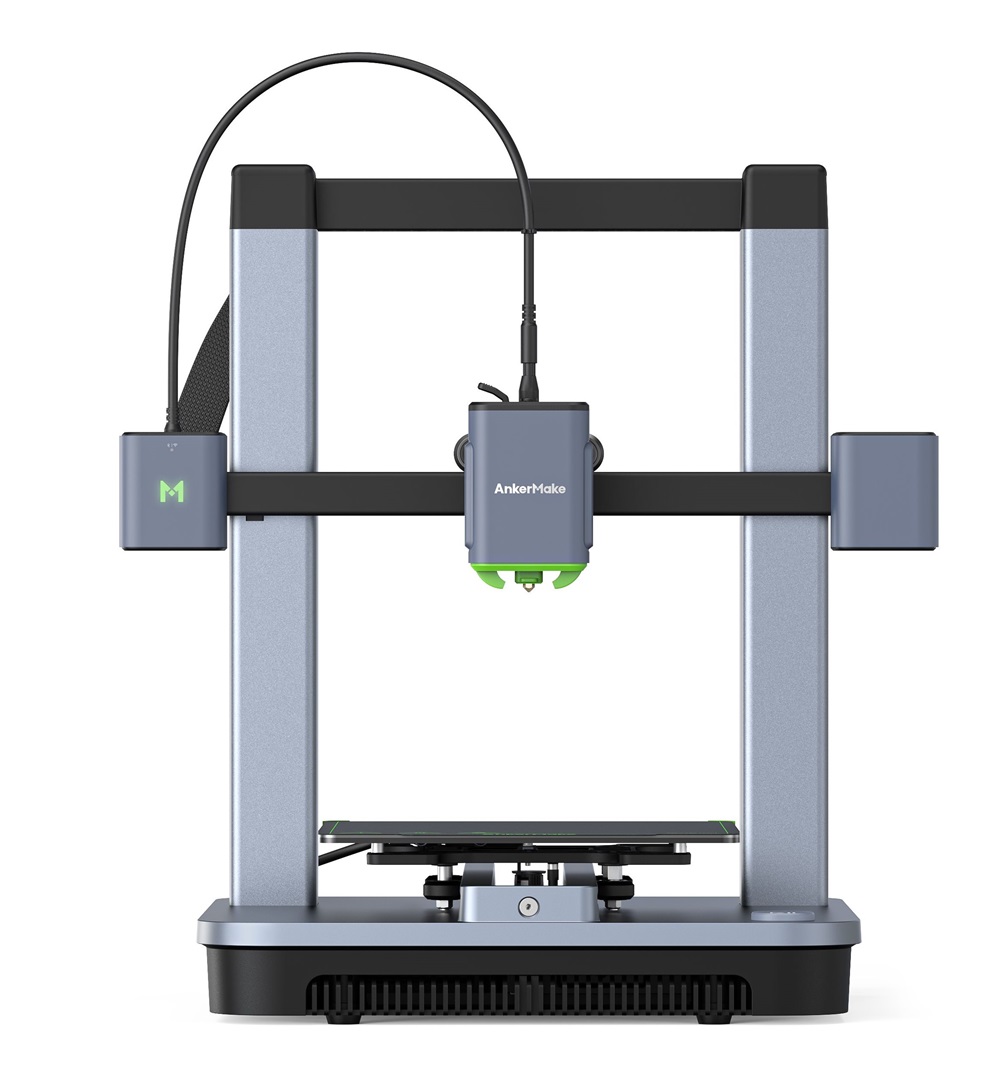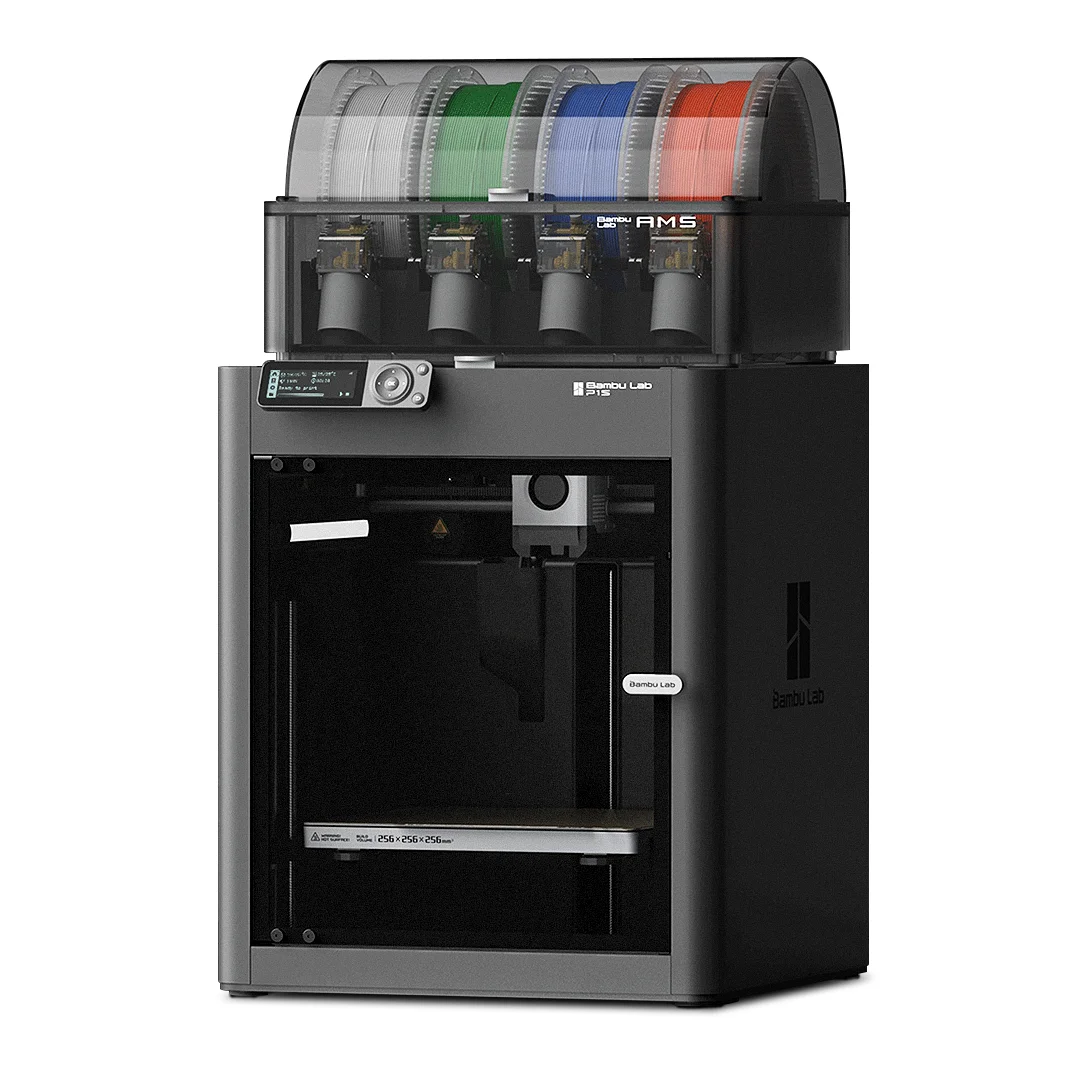Compare M5C vs P1S
Comparison between the best 3D printers
Choose the best 3D printer at the best price. The cheapest 3D printers are here.
Buy a 3D printer here with 3D Fila.
 |
 |
|
| Model | M5C[BUY M5C] |
P1S[BUY P1S] |
| Printing Material | Filament | Filament |
| Buy Filament for AnkerMake M5C | Buy Filament forBambu Lab P1S | |
| Estimated price | $399,00 | $949,00 |
| Manufacturer | AnkerMake | Bambu Lab |
| Release Year | 2023 | 2023 |
| Print Volume [mm] | 220x220x250 | 256x256x256 |
| Printer Size [mm] | 466x374x480 | 389x389x458 |
| Weight [kg] | 9,6 | 12,95 |
| Power Loss Recovery | YES | YES |
| Enclosed printer | NO | YES |
| Bed Leveling | Automatic | Automatic |
| Filament End Sensor | YES | YES |
| Bed type | Heated | Heated |
| Power supply system | Direct Drive | Direct Drive |
| Standard nozzle | 0,4 | 0,4 |
| Maximum Nozzle Temperature [°C] | 300 | 300 |
| Maximum Bed Temperature [°C] | 100 | 100 |
| Maximum printing speed [mm/s] | 500 | 500 |
| Filament holder | YES | YES |
| Camera for supervision | NO | NO |
| Recommended filaments | PLA, PETG, TPU, ABS, PA, PLA-CF, PETG-CF, PA-CF | PLA, PETG, TPU, PVA, PA, PA-CF, Nylon, PC |
| Recommended slicers | AnkerMake Studio (macOS, Windows), Simplify3D, Ultimaker Cura, PrusaSlicer | Bambu Studio, Super Slicer, Cura, Prusa Slicer, Orca |
| Maximum Resolution [mm] | 0,1 | 0,1 |
| Processor | Quad ARM A7 1.2 GHz | |
| Display | Touchscreen 5'' | |
| Power Supply | 350 W | 350 W |
| Connectivity | Wi-Fi, USB-C, Bluetooth | Wifi, Bambu bus, Cartão SD |
| Operating systems | Windows, Linux e Macbook | Windows, Linux, Macbook |
| Date of registration in the system | 2024-09-11 | 2024-04-11 |
| Release date | 2023 | 2023 |
| Extra features | The AnkerMake M5 printer stands out for its impressive print speed, reaching up to 500mm/s. It features AI print monitoring, an integrated camera for creating timelapses, auto-leveling bed with pressure sensor, direct extruder, flexible PEI-coated build plate, and Wi-Fi and USB-C connectivity. Assembly is quick and easy, and the printer is designed to deliver high print quality and ease of use. | The Bambu Lab P1S stands out for its out-of-the-box practicality, eliminating the need for manual adjustments with automatic calibrations such as bed leveling and vibration compensation. It features multicolor printing capability through the AMS system, allowing up to 16 colors when connecting four AMS units. With an advanced control algorithm, the P1S offers fast printing speeds without sacrificing quality. Equipped with modern features such as filament end sensor, semi-automatic belt tension, direct extruder, welded frame and all-metal hotend, along with a fully enclosed chamber, the P1S promotes a superior printing experience, supporting a wide range of materials. |
| Support for multiple colors and materials (AMS and CFS) | NO | YES |
Notes * |
||
| Cost-benefit | 7 / 10 | 7 / 10 |
| Hardware | 2.8 / 10 | 5.6 / 10 |
| Tela | . | . |
| Print volume | 3 / 10 | 4 / 10 |
| Performance | 4 / 10 | 4 / 10 |
| [BUY M5C] | [BUY P1S] |
Conclusion |
| In comparing the AnkerMake M5C and the Bambu Lab P1S, both 3D printers released in 2023, it is clear that each offers unique strengths catering to different user needs. The AnkerMake M5C is a more budget-friendly option, providing impressive print speeds, ease of assembly, and a range of supported filament types. Its compact design, lighter weight, and user-friendly features, such as automatic bed leveling and direct drive system, make it a great choice for hobbyists or those new to 3D printing. However, it lacks an enclosed build chamber which could limit the range of materials that can be effectively printed. On the other hand, the Bambu Lab P1S, while priced higher, offers advanced features such as a fully enclosed chamber, superior automatic calibration processes, and multicolor printing capabilities through the AMS system. These features enhance its versatility and effectiveness in handling a wider array of filaments, making it suitable for more complex projects and professional use. Though both printers received a similar cost-benefit score, the P1S's performance and hardware capabilities suggest it is better suited for users who demand high-quality prints with more advanced functionalities. Conversely, the M5C stands out for casual users looking for a reliable and efficient entry-level printer without making significant financial investments. Ultimately, the choice between the two will depend on the user's specific requirements, budget considerations, and plans for utilizing the printer's capabilities. |

